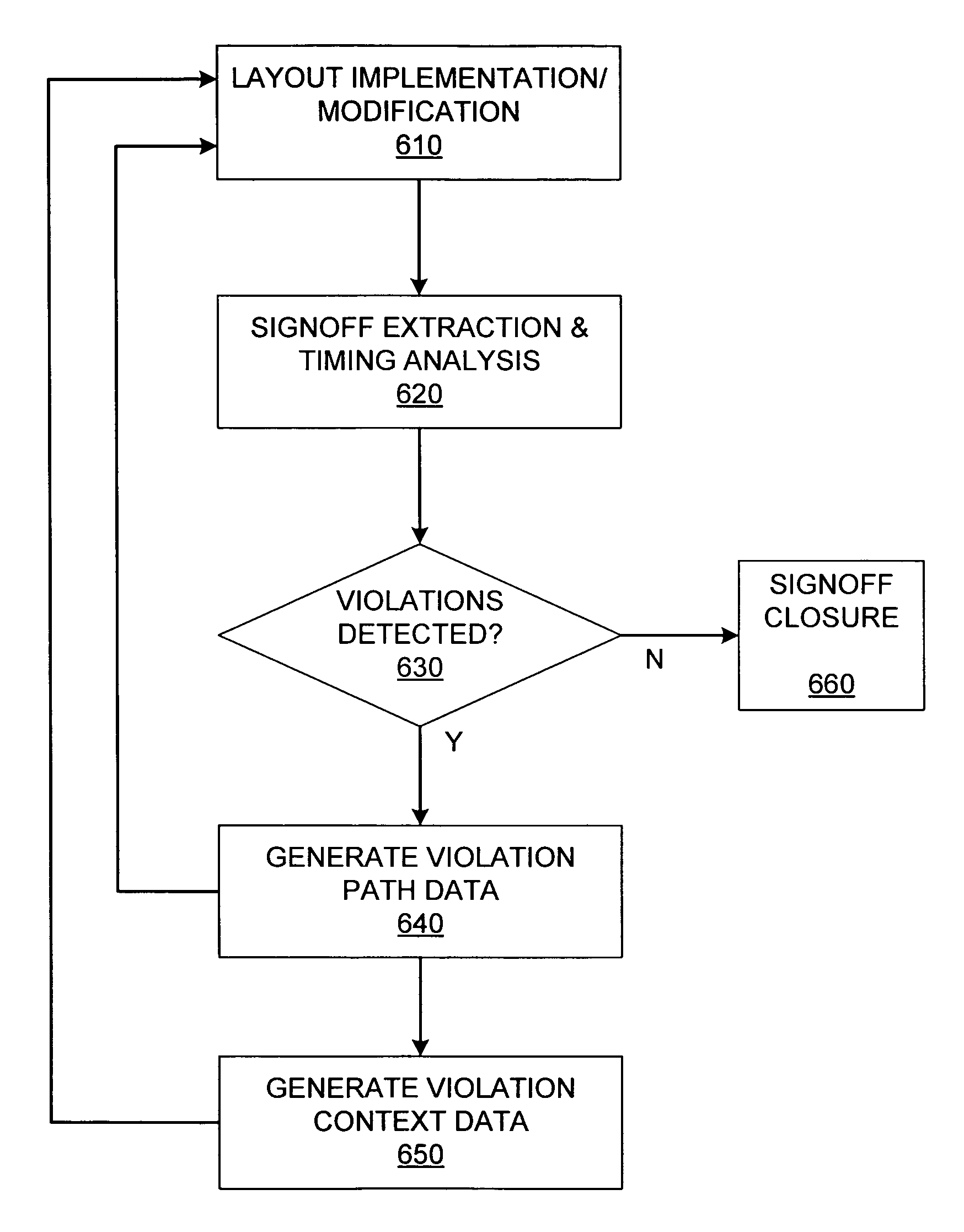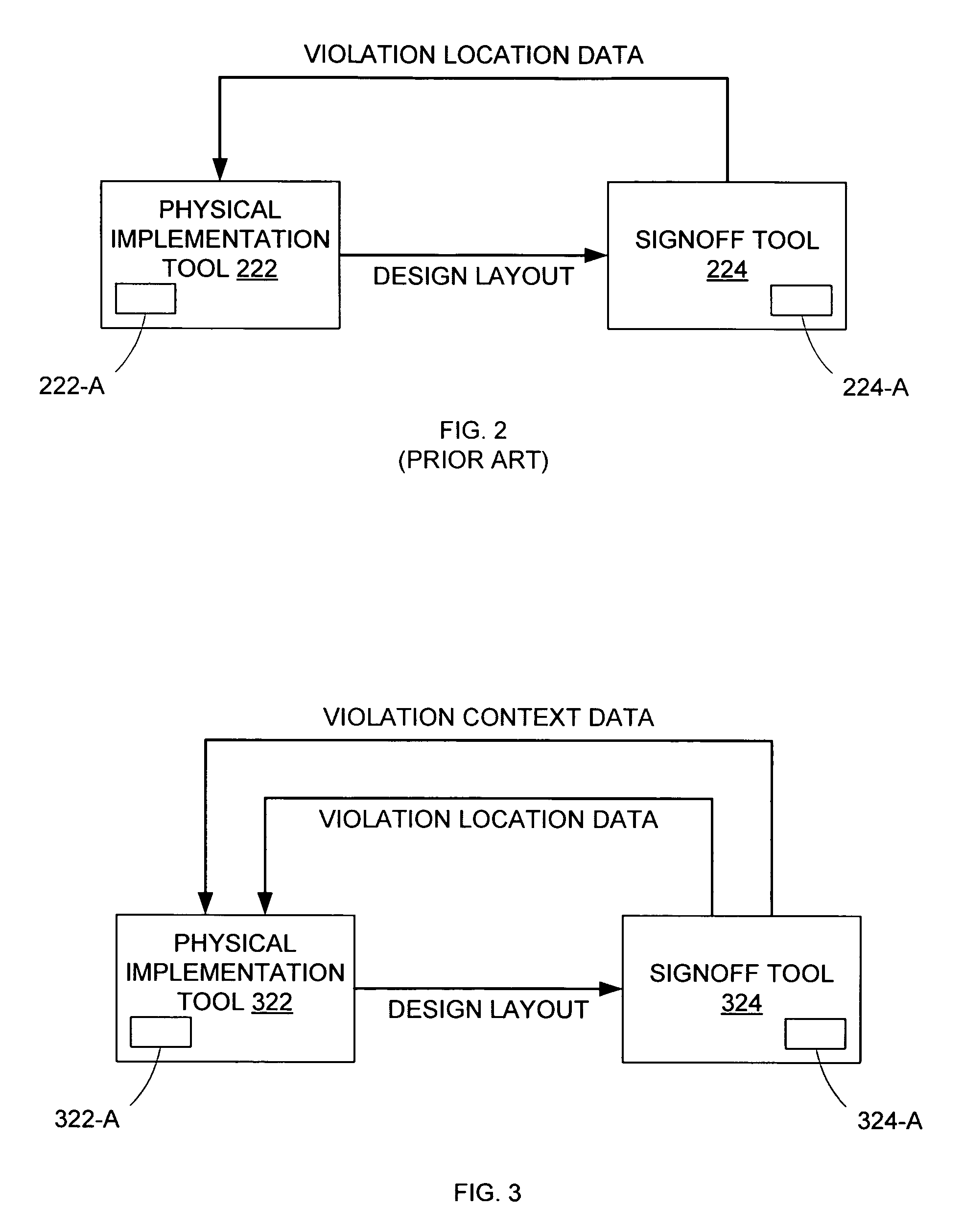Engineering change order process optimization
a technology of engineering change order and process optimization, applied in the field of integrated circuit design, can solve the problems of significantly hampered conventional eco (engineering change order) process used to complete the signoff of ic design layout, significantly less precise analysis performed by the physical implementation tool, and violations detected by the signoff tool are actually not detectable by the implementation tool. , to achieve the effect of less precis
- Summary
- Abstract
- Description
- Claims
- Application Information
AI Technical Summary
Benefits of technology
Problems solved by technology
Method used
Image
Examples
Embodiment Construction
[0035]The conventional ECO (engineering change order) process used to complete signoff of an IC design layout is significantly hampered by the fact that a physical implementation tool is used to make layout modifications based on violation path data from a signoff tool. Specifically, because the analysis performed by the physical implementation tool is significantly less precise than the analysis performed by the signoff tool, the violations detected by the signoff tool are actually not detectable by the implementation tool. Therefore, dealing with those violations using the implementation tool can be a somewhat haphazard, and hence very time-consuming, process. By enabling the transfer of context information for violations (along with the location / path information for those violations) from the signoff tool to the implementation tool, and by enabling the use of that context information in the subsequent layout modifications by the implementation tool, a layout meeting signoff requi...
PUM
 Login to View More
Login to View More Abstract
Description
Claims
Application Information
 Login to View More
Login to View More - R&D
- Intellectual Property
- Life Sciences
- Materials
- Tech Scout
- Unparalleled Data Quality
- Higher Quality Content
- 60% Fewer Hallucinations
Browse by: Latest US Patents, China's latest patents, Technical Efficacy Thesaurus, Application Domain, Technology Topic, Popular Technical Reports.
© 2025 PatSnap. All rights reserved.Legal|Privacy policy|Modern Slavery Act Transparency Statement|Sitemap|About US| Contact US: help@patsnap.com



